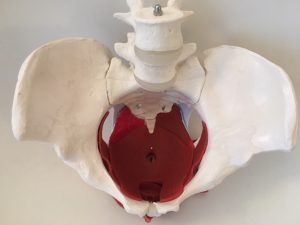
Running after having a baby
I have rarely come across an activity that makes womens eyes light up more than running. It can provide the perfect endorphin release and seems to represent independence. Something that many new mums crave, right? It is also quick and convenient to fit around a young family too. However, running is harder than you think! The physical and repetitive demand of running can take a toll on a body that hasn’t got adequate post-pregnancy foundations yet.
What do I mean by foundations?
Well, I`m talking about your pelvic floor, diaphragm and abdominal muscles. All the elements of your core system that help you to run better and feel stronger.
Pregnancy is a great way of interrupting those foundations! Pelvic floor stability, breathing patterns and overall strength can be knocked out of stride after having a baby and whilst being a sleep deprived mum.
Did you know that you exert 2.5 times your body weight every time you land when running on the flat? So, it’s a good idea to train to run, not run to train.
Work on those foundations a little, before adding the impact of running in – you will be a much more efficient runner, enjoy it better and your body will also thank you in the long run.
Guidelines:
We now have some running guidelines put together by an excellent team (see sources below) who examined the current research out there about running after a baby. The guidelines suggest waiting for 4-6 months after delivery, to start running. This will allow your body to make the most of that initial recovery after the demands of pregnancy and a C section or a vaginal delivery.
Then they suggest some good tests to see if your body has the stability and power it needs to be run-ready like:
⁃ Walking 30 minutes ⁃ Single leg balance 10 seconds ⁃ Single leg squat 10 repetitions each side ⁃ Jog on the spot 1 minute ⁃ Forward bounds 10 repetitions ⁃ Hop in place 10 repetitions each leg ⁃ Single leg ‘running man’: opposite arm and hip flexion/extension (bent knee) 10 repetitions each side ⁃ Single leg calf raise 10 reps each ⁃ Single leg bridge 10 reps each side
If you can achieve the above with good control (maybe film yourself and check) , then that’s a good sign you are ready to introduce running.
You can use these tests as an exercsie to improve and get run ready.

How is your pelvic floor functioning?
The pelvic floor muscles are placed under strain during pregnancy with the weight of the baby, placenta and extra fluid (which can be the equivalent of an extra 5 kgs in the last few weeks). So, pelvic floor dysfunction can still be ultra-common after C section.
A vaginal delivery places an additional stretch on the pelvic floor muscles as the baby transcends. Sometimes stitches and repairs are needed. You wouldn’t start running on an injured muscle straight away, without some proper rehab first so think along the same ways after vaginal delivery.
Other questions to consider are:
Are you having any leaking?
Do you have vaginal heaviness?
Have you got ongoing constipation?
Are you struggling with pelvic pain?
Is sex painful since having your baby?
These can be signs of pelvic floor dysfunction, so adding running into the mix too soon, may not help. Build up your foundations if you are having these issues and see a pelvic health physiotherapist if you need help. They are not things you have to live with or run with.

In summary, wait 4-6 months, do some strengthening exercsies first and be pelvic floor symptom-free before running.
There are some other more low-impact activities you can use pre running, as a way of strengthening and getting your cardio fitness improved.
These include, cycling, swimming, elliptical training, yoga, Pilates or rock-climbing
Walking up hills is also a great way to improve your cardio capacity and get your glutes working in lower impact way
By the way, a side note about breastfeeding here. Breastfeeding women will have lower levels of oestrogen and increased levels of relaxin. However, so far, the evidence isn’t there to say that this leads to increased joint laxity. Moderate to vigorous exercise has not been shown to affect the quality of breastmilk. If you are a breastfeeding mum,consider feeding or pumping just before a run for the sake of comfort. Also, ensure, you are drinking enough water to compensate for the breastfeeding and the run. Have a supportive and comfortable bra too! (no brainer).

Some tips to include when you get back to running:
• Make sure you are breathing deeply as you run. This will ensure your core system (diaphragm, abs and pelvic floor) is working efficiently. You are less likely to have pain or leak too.
• Don’t grip muscles. Avoid gripping your pelvic floor muscles, abdominals or glutes. This will just cause them to fatigue too quickly and prevent your core system working at best.
• Lean into your run a little, like you are running into a strong wind. Allow your legs to extend out behind you. This will place your core in a good position for power and makes your glutes work better.
• Find yourself a running coach. This can be a great way of sorting your alignment and motivate you to continue your journey.
When you do get back to running, here are some of the signs that it may be too much, too soon:
• Urinary Leaks
• Increased urinary or faecal urgency
• Vaginal Heaviness
• Bleeding (that is not associated with a period)
• Pain (anywhere!)
These are indications that some further strengthening may be required or maybe you have added in too much, too early. Cut back your distance/time or add in some walk/jog intervals. See if that helps. If symptoms persist, then book in to see a pelvic health or womens health Physiotherapist so you don’t have to put up with them and stop the running you love.
You can find help on:
CSP.org Find a Physio (put womens health physio into the search)
or
Themummymot.com
Or ask your GP to refer you for womens health physio on the NHS
Sources:
Marnach, M. L., Ramin, K. D., Ramsey, P. S., Song, S. W., Stensland, J. J. and An, K. N. Chatacterization of the relationship between joint laxity and maternal hormones in pregnancy. Obstetrics & Gynaeocology 101(2), 331-335.nning(2003)
GottschallJS et Ground reaction forces during downhill and uphill running al J Biomech. 2005 Mar;38(3):445-52
Returning to running postnatal- Guidelines for medical health and fitness professionals managing this populations By Grainne Donnelly, Tom Goon and Emma Brockwell. Published March 2019
https://www.juliewiebept.com/tag/running/
